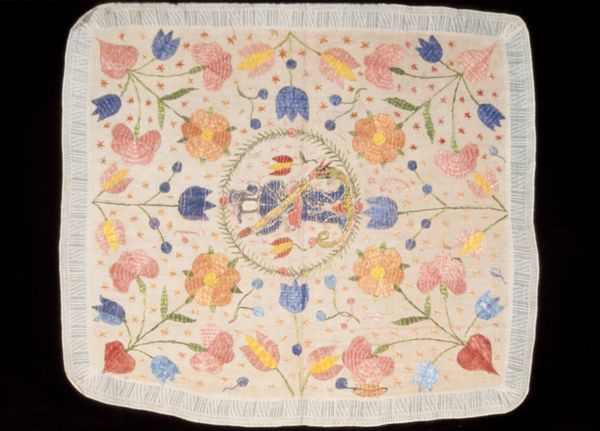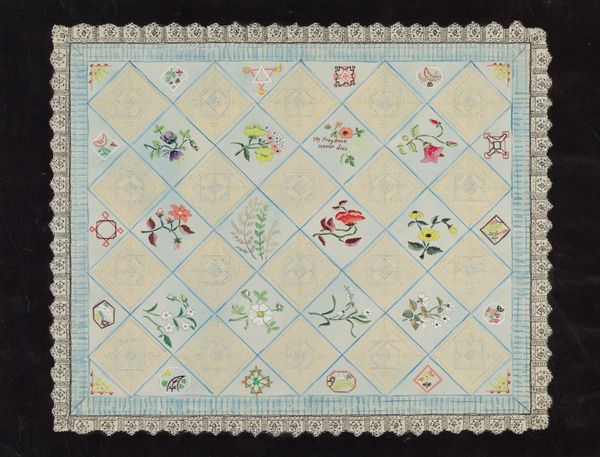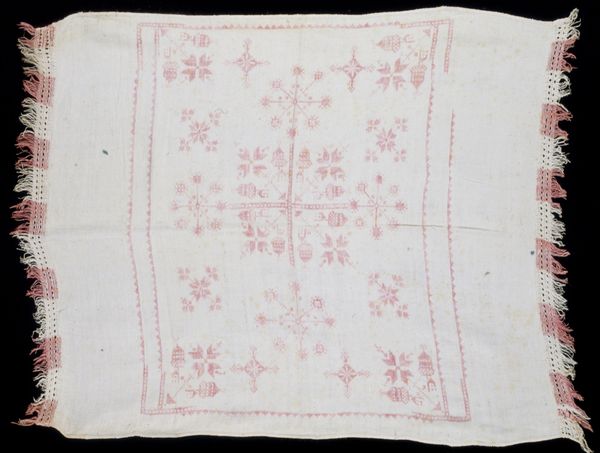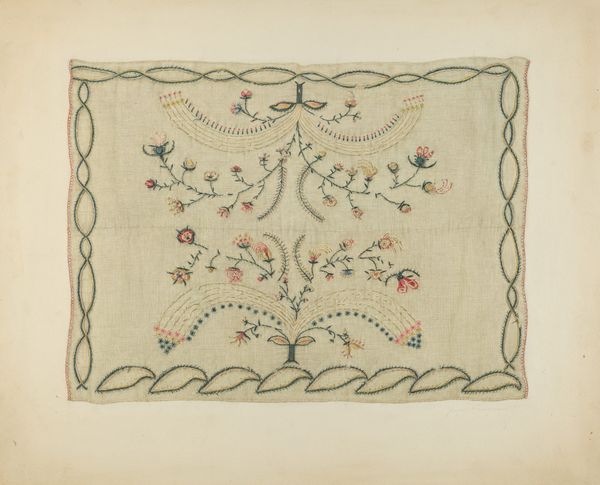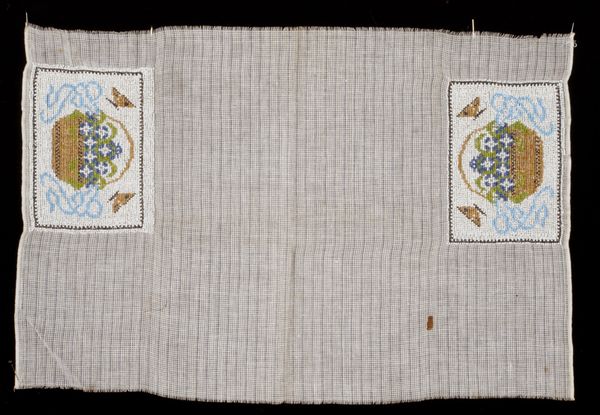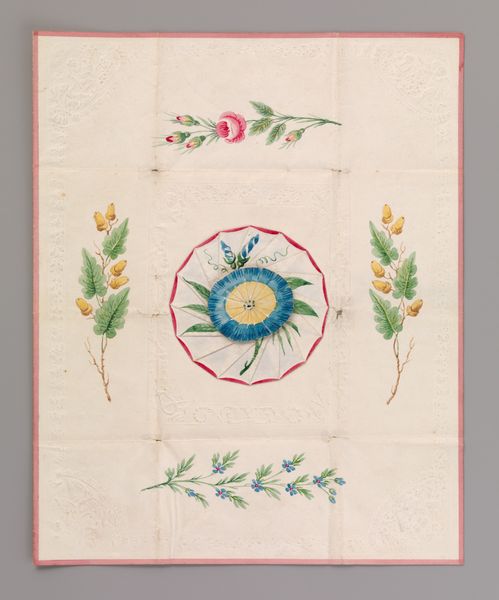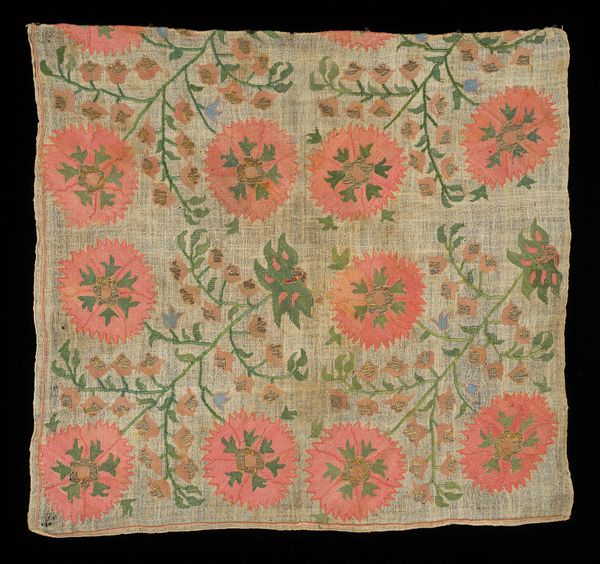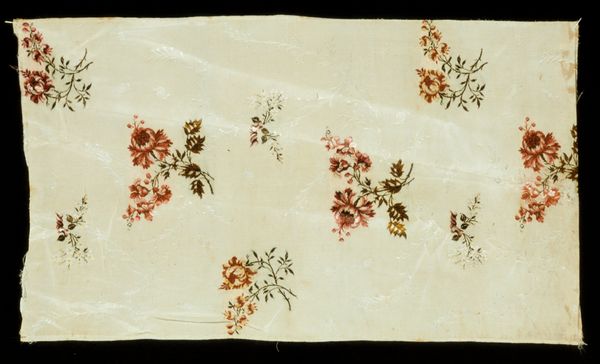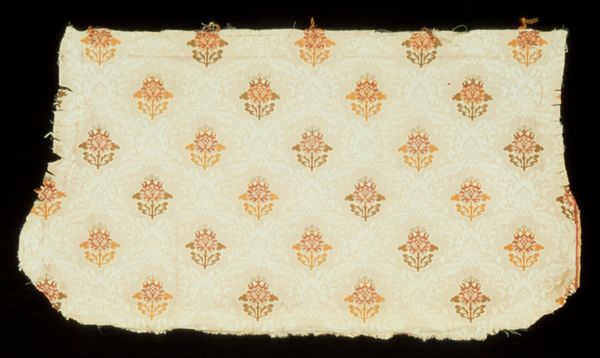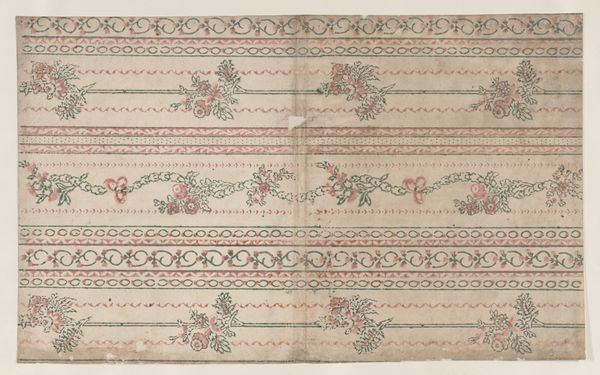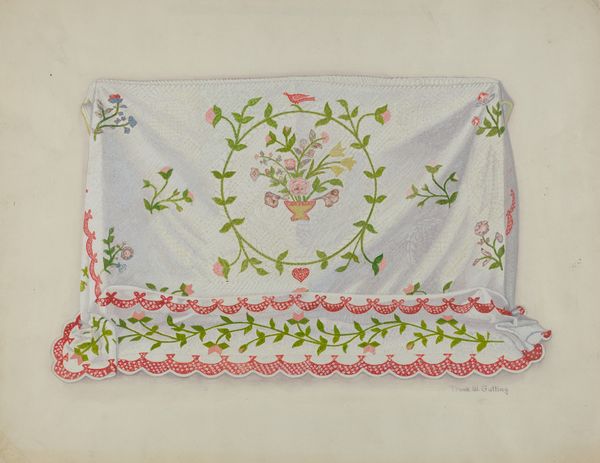
silk, textile
#
natural stone pattern
#
germany
#
silk
#
textile
#
collage layering style
#
fashion and textile design
#
hand-embroidered
#
pattern repetition
#
watercolour bleed
#
textile design
#
imprinted textile
#
layered pattern
#
decorative art
Dimensions: 18 1/2 x 14 1/8 in. (46.99 x 35.86 cm)
Copyright: Public Domain
Editor: Here we have an 18th-century German pillow cover. It’s an anonymous piece, made from silk and other textile materials. The pastel colors are so delicate. What strikes you most about this work? Curator: Thank you. Considering the pillow cover’s creation within the 18th century, a time marked by rigid social hierarchies, I find myself contemplating the unspoken narratives embedded in its very fabric. Do you notice how the repeated floral motifs, though seemingly benign, create a meticulously ordered surface? Editor: Yes, the pattern is quite symmetrical. Curator: Exactly! This symmetry reflects the desire for order and control so valued in that era. Think about the lives of women during this period. Needlework, like the hand-embroidered designs we see here, was not merely a pastime. It was a carefully monitored expression of domestic virtue and social standing. The silk threads, the intricate stitches, all speak to a culture where a woman's worth was intricately tied to her ability to create beauty within the confines of her home. What do you think about that domestic confinement? Editor: I never thought about it that way! It's easy to just see a pretty pattern. It makes you wonder who made this, and what her life was like. Curator: Precisely! By analyzing these seemingly simple motifs through a feminist lens, we start to uncover a dialogue about agency, confinement, and the subtle ways women navigated their roles in a patriarchal society. The decorative can become deeply political when viewed within its historical context. Editor: I'll definitely look at textiles differently now. Thanks so much. Curator: My pleasure. Remember, art is never created in a vacuum. It's always reflecting, reinforcing, or even resisting the norms of its time.
Comments
No comments
Be the first to comment and join the conversation on the ultimate creative platform.
